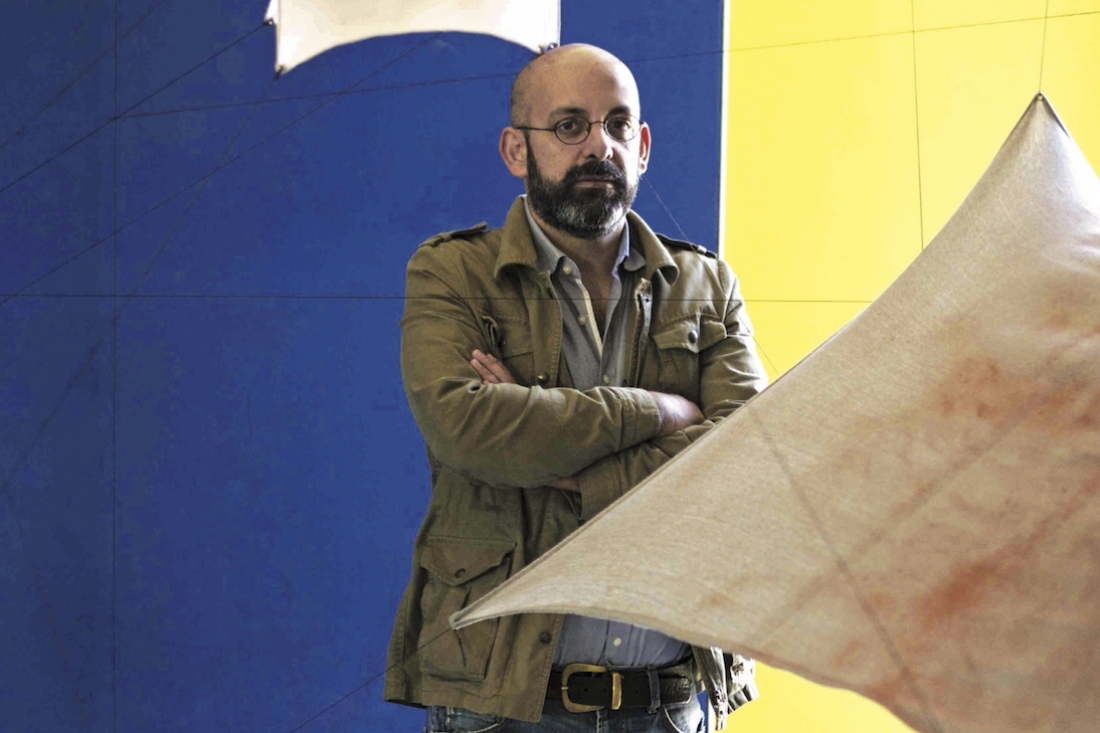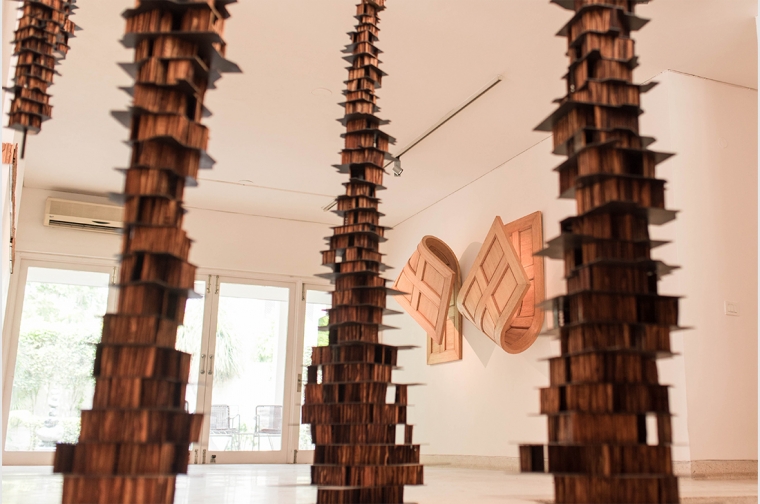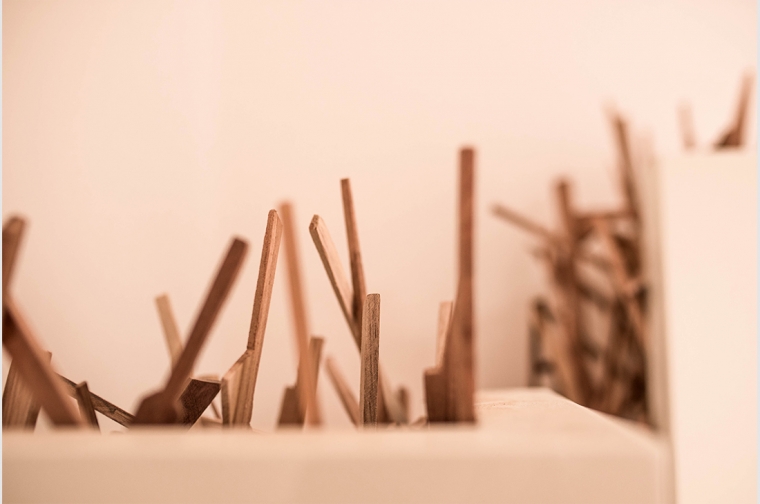

For his second solo show at Nature Morte, Martand Khosla delves into the dark underbelly of urban India, the place where pavement dwellers wash dishes in the shadows of luxury high-rises, when the city floods during times of drought. His title, 1:2500, refers to the scale of survey maps used to record populations, constructions and geographies, where small gestures stand for things much larger, when control gives way to chaos. Khosla’s sculptures act as experiments with materials and techniques to be used in his architectural practice, re-cycling waste into luxurious seductions of craftsmanship and allusions. His works are inspired by the constant churning of the citizenry and the energies of its financial maneuvers. Nothing is immune to these forces: psychology, climate, relationships, structures, paths of circulation, and modes of communication; everything flounders in the gap between the Real and the Surreal.
What inspired 1:2500? How does the process work from thought to idea to curation to execution to final exhibit?
1:2500 is part of a continuing exploration and engagement with the city. Over the past several years, I have been probing various facets of the city, looking at labour, legal and urban planning approaches as well as the financial powers that force and shape the contours of the city. This exhibition examines some aspect of today’s city and perhaps ventures towards considering possibilities for the future.
The works for this show have been in some form of making for the past two years.

The works you have created seem very technical can you share the process of the bent standing door?
Being a practicing architect, I bring a lot of my learnings from construction sites to the making of my sculpture and drawings. This is also true of the material that I choose to work with, which is often building construction material. I have also trained for several years in carpentry, and a lot of the learnings from woodworking have been used to create these works, they range from streaming, heating, laminating, laser cutting and moulding to create a large number of the works in the show.
What is the significance of doors in your world?
Doors carry within them several inherent readings -- ideas of transition, thresholds, borders and hint at transitory conditions, like acceptance, entrance, inclusion and exclusion. Doors, ladders windows hold multiple layers of meaning; I personally choose to hint at some while leaving a lot to personal interpretations of the viewer.
“The idea of reading the city as a static zone of buildings and infrastructure is deeply flawed, yet this is the vision that remains central to the planning decisions within our cities. New readings of the city are needed to create a richer discourse and one that allows for different lenses to be applied to understanding, changing and planning for our reality.”
You are greatly inspired by the city - what is it about the city that fascinates, intrigues and disappoints the artist in you?
The city remains a constantly changing organism; much has been written about the nature of cities and their ephemeral nature. The idea of reading the city as a static zone of buildings and infrastructure is deeply flawed, yet this is the vision that remains central to the planning decisions within our cities. New readings of the city are needed to create a richer discourse and one that allows for different lenses to be applied to understanding, changing and planning for our reality.
When do you know when a work is complete?
The notion of completion is very fluid, usually individual works become moments in a process of thought, and in that case, it would not be possible to look at them as either being complete or incomplete. For me this exhibition is a continuing process in engagements with my understandings of the city and these works are talking to the moment that I am exploring and prodding over the past several months. Having said that there is always a moment when a work is installed in a space outside the studio that is about a completion of a micro process, which is when it takes on a new context and new readings which are very interesting to me.

As an artist do you feel you are responsible in some way. What do you wish for your art to communicate?
I think we all have responsibilities that go beyond just our professions, but at the same time I don’t carry any load of expectation from my art as a place of communication or venue of change. In fact, I try very hard not to get engaged in conversations that are directed at any singular work while trying to probe its inherent qualities – Particularly with solo shows, I see the body of works belonging together that are exploring certain larger ideas and I particularly also enjoy multiple and unexpected readings of my work by the viewers, which allows for a richer understanding of the city for me.
Is art, architecture and architecture, art? Comment
Ha! I don’t know what you mean by that – Historically, in more conservative understandings of art and architecture, there have been certain very distinct dividing lines between the two. However, within the modern era, looking at the works of Tatlin and the constructivists from the 1920’s on the works of a number of architects (including Le Corbusiers, open hand monument and the tower of shadows in Chandigarh) there are streams of art and architecture where the boundaries are completely blurred. This is also true of the relationship between art and several other fields of science and the performing arts. For me, art is architecture is art is architecture is art is………..